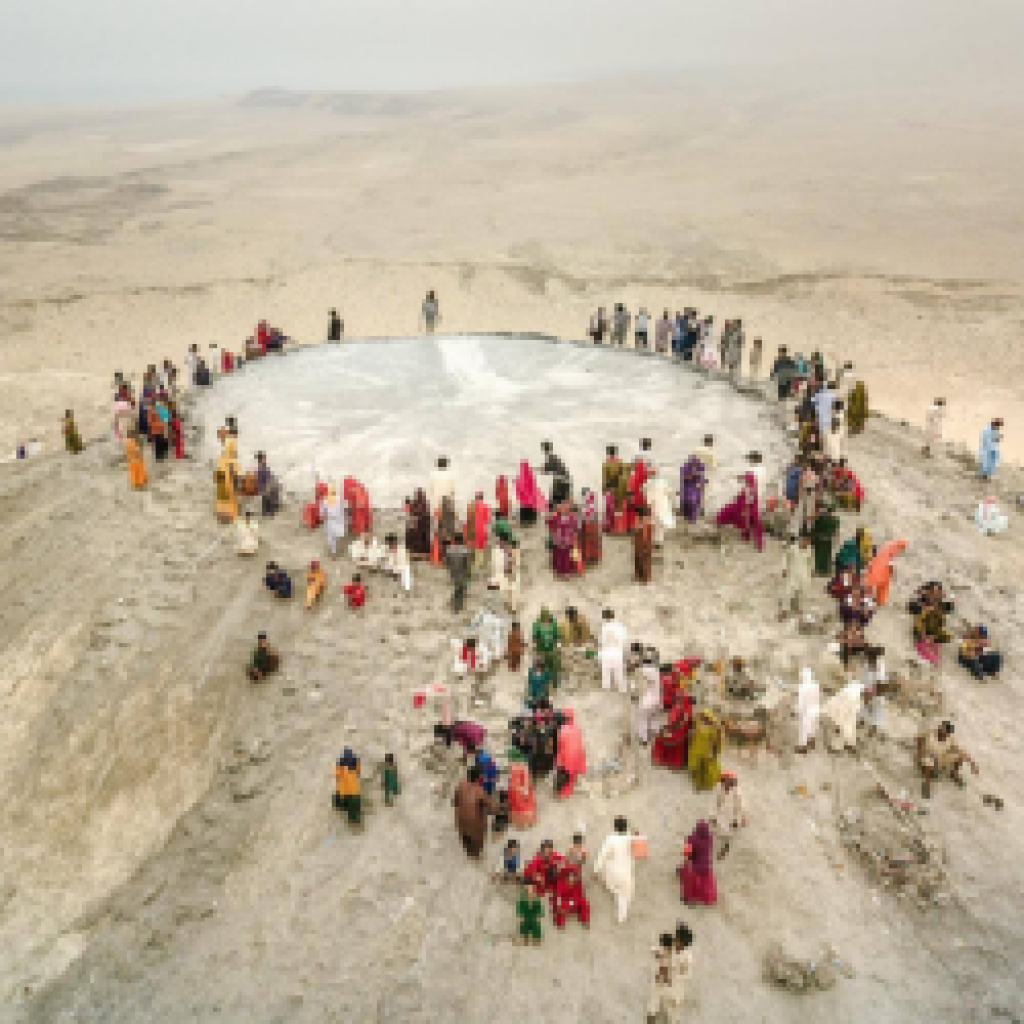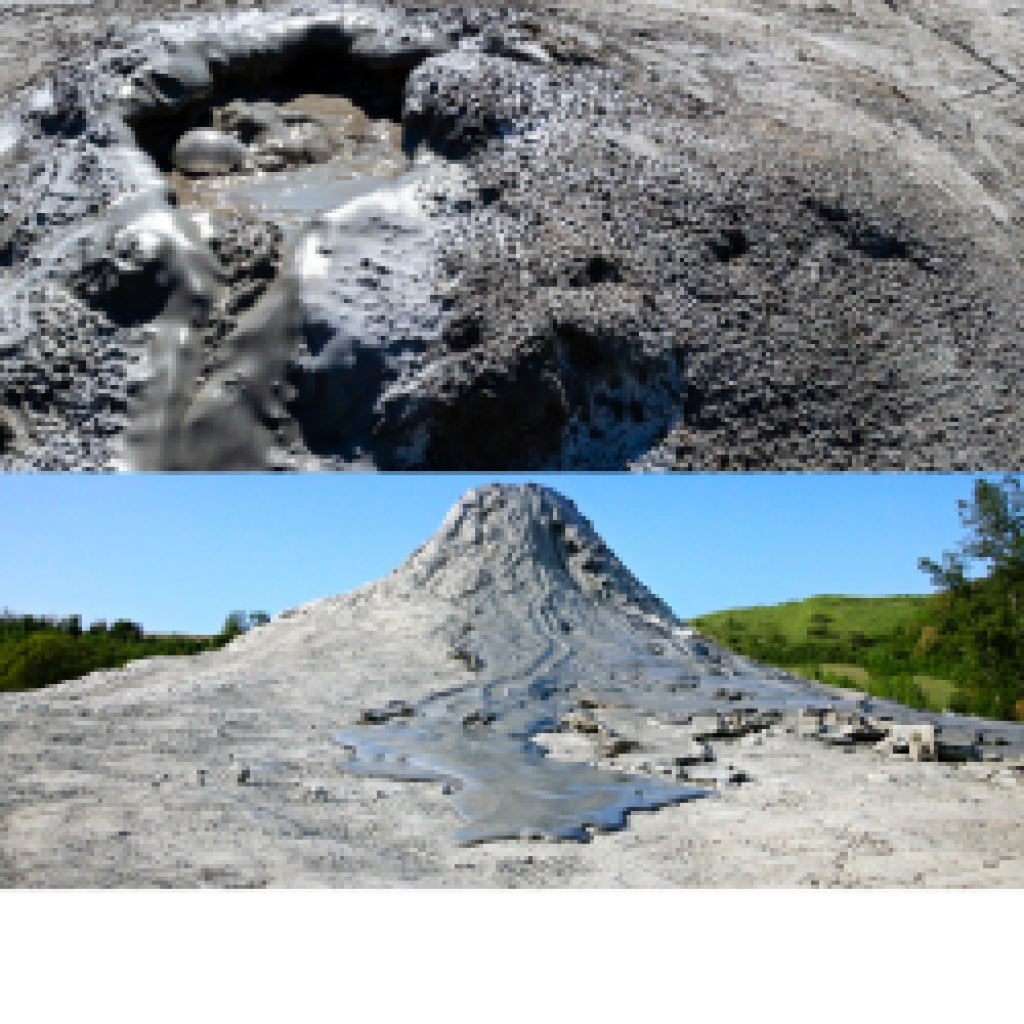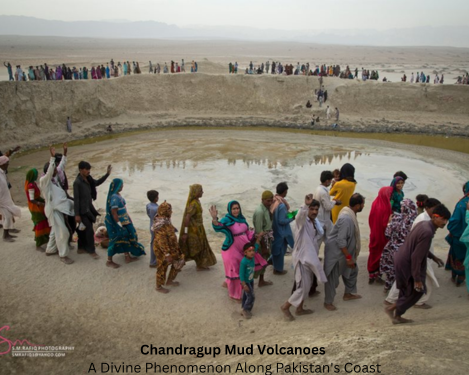Introduction:
Standing along the picturesque coast of Balochistan lies the Chandragup Mud Volcanoes Complex, a geological marvel where mud volcanoes defy conventional expectations. In this blog, we delve into the unique characteristics of these volcanoes and their spiritual significance in Hindu culture. Chandragup complex is situated in the Hingol National Park, Lasbela District off the Coastal Highway near the Hingol River. It takes 5 hours from Karachi and 2 hours from Uthal to reach Chandragup provided your vehicle is mechanically fit and the road is clear.



The Geological Marvel:
As the tectonic plate beneath the Arabian Sea subducts beneath the Eurasian continent, the Chandragup Complex emerges as an extraordinary result. Unlike typical volcanoes, these spew mud and methane, creating a surreal landscape.
- Chandragup I is the most striking, standing at 100 meters with a crater periodically overflowing a 15-meter mud lake. Occasionally it blows out flam as well.
- Chandragup II, at 45 meters, boasts a figure-8 shaped mud lake, a testament to the collapse of twin volcanoes over time.
- Chandragup III, additionally, an eroded rim of an extinct mud volcano is visible to the northwest.
Cultural and Religious Significance:
Chandragup isn’t just a geological wonder; it holds profound religious importance, particularly in Hinduism. Devotees consider it an embodiment of the Hindu god Shiva and refer to it as Baba Chandragup. Pilgrims en route to the Hinglaj Mata temple make it a pivotal stop, throwing coconuts into the craters as wishes and tokens of gratitude for answered prayers.
The Pilgrimage Rituals at Chandragup Mud Volcanoes:
Pilgrims undertake a spiritual journey, staying awake all night in fasting and meditation, contemplating the sins they will confess at Chandragup’s rim the following day. They bake roti from ingredients contributed by fellow yātrīs, offering it to Baba Chandragup along with coconuts, betel nuts, and dal. Ascending the slope, they confess their sins, seeking forgiveness through the bubbling mud and the wind’s reaction, guided by the chaṛīdār.
Modern Practices:
Traditionally, the pilgrims introduced themselves at the volcano’s peak with full names and places of origin, confessing sins in front of the group. Today, coconuts, betel nuts, and dal join the traditional roṭi offering. The bubbling mud and wind’s reaction guide the chaṛīdār in determining if the pilgrims’ sins are forgiven, fostering a deeply spiritual experience.
Tour Description:
Explore the extraordinary Chandragup Mud Volcanoes Complex, where mud volcanoes defy the norm, emitting methane and mud instead of typical volcanic materials. Discover the religious significance of Chandragup, worshipped as Baba Chandragup by Hindus, and a sacred pilgrimage site on the way to the Hinglaj Mata temple. It is located 100 km from Uthal (the headquarters of Lasbela District), which admiratively controls the area up to Buzi Pass. Be mindful of the religious sanctity of the place and take extra care not to hurt someone’s sentiments.
Conclusion:
The Chandragup Complex stands as a testament to the wonders of nature and the fusion of geology and spirituality. As visitors embark on a pilgrimage to the Hinglaj Mata temple, the mystical mud volcanoes of Chandragup offer a unique blend of awe-inspiring landscapes and sacred rituals, creating an unforgettable journey for both the adventurous traveler and the devout pilgrim.


0 Comment